If you’re used to shooting rifles and handguns, getting a crossbow to hunt with might sound a bit complicated and intimidating or have you thinking that you wouldn’t have the proper stopping power to put your target down humanely.
However, in this beginner’s guide, I’ll explain the main things you should look for when choosing a hunting crossbow, why it’s effective, and a few other factors you should consider.
The most important factors include the crossbow’s draw weight, arrow speed and power, accuracy, and the size/weight of the crossbow. For more information, please click here.
What Is a Crossbow?
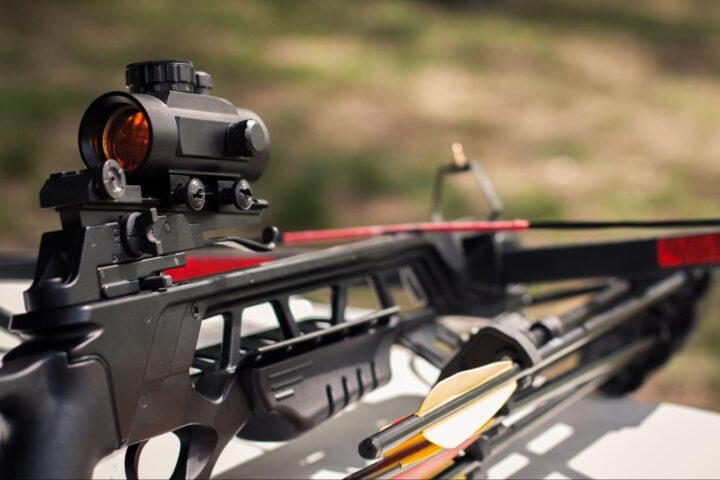
A crossbow is a ranged weapon with an elastic mechanism to launch an arrow or other projectiles toward a target. Unlike guns, they don’t require bullets, chambers, barrels, or traditional firearm propulsion.
Crossbows are often used for hunting because they are much quieter than guns, so hearing protection isn’t needed. It allows you to be more aware of your surroundings, too.
Hunting crossbows also usually come with a rail for mounting scopes on them. While you can put rifle scopes on crossbows, there are also crossbow-specific scopes to produce better accuracy with the right ergonomics.
How Crossbows Work
Since crossbows don’t utilize a bullet in a chamber like rifles and handguns do, they have to launch the projectile using another method: tension.
Crossbows have a bow-like component called a prod located in the front. It’s positioned horizontally as opposed to vertically, like on regular bows.
This provides tension to the bowstring, which is then pulled back to the locking mechanism. This stored tension is what is released, allowing the crossbow bolt or arrow to travel and hit the target.
Instead of you using your own strength or a crank to draw the bowstring as with traditional bows, a crossbow has a bolt retention spring that only releases the nocked arrow or bolt when you pull the trigger.
What to Look For in Crossbows for Hunting
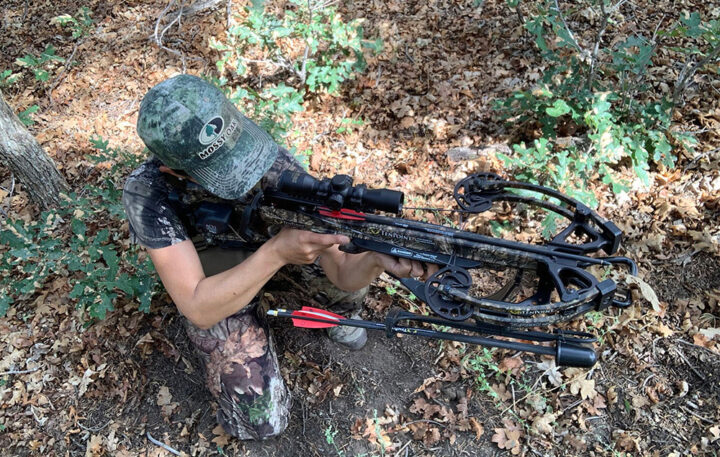
Before you head to your local outdoor shop hoping to score the best crossbow possible, you should know what to look for when searching for one. You’ll need to find the one that best suits your needs and context.
There are different factors to consider, like the draw weight, arrow speed, accuracy, and size/weight. I’ll explain why getting these right is crucial for a good crossbow.
Draw Weight
A crossbow’s draw weight is how much force needs to be exerted on the bowstring to load it. Draw weight is also commonly referred to as “pull.”
Getting a crossbow with a higher draw weight might be more difficult to load, especially if you’re a smaller person or aren’t particularly strong in your upper body.
However, a higher draw weight directly correlates to how much power and speed the arrow will have when you fire the crossbow.
If you’re just starting out, I’d recommend getting a crossbow with a draw weight between 80 and 125 pounds at maximum hand-drawn. If there’s a crank, you can go higher.
Arrow Speed and Power
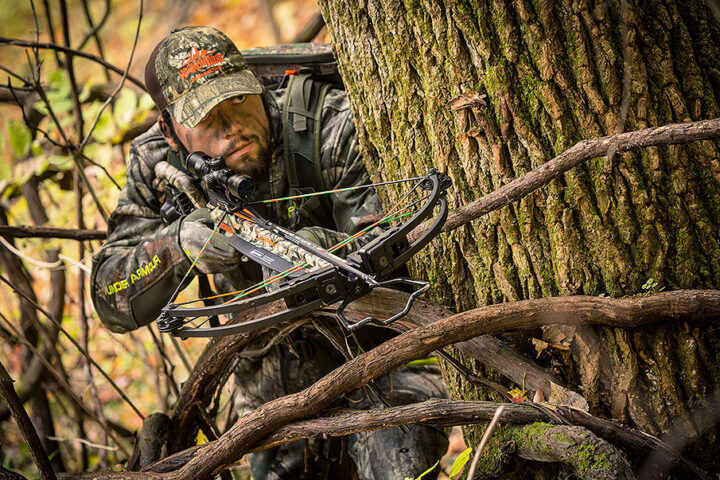
If you’ve got a bow with a good pull, the next step is making sure that the crossbow shoots at a high enough FPS (feet per second) to hunt effectively.
Getting a crossbow with an arrow speed of at least 350 FPS is a great starting point for finding the perfect crossbow, even for beginners.
For power, you should look for a bow rated for at least 100 foot pounds of kinetic energy. This will ensure you can kill what you’re hunting in a single shot.
Accuracy
Another vital factor to consider when hunting is how accurate the crossbow is. Does it shoot precisely where you point it? How much does it deviate from the aiming point?
Most crossbows are rated to be reliable accuracy-wise up to a distance of 40 yards. After that, other factors like arrow speed, wind direction, and shooter error start playing more prominent roles.
If a crossbow has reviews of it not being accurate because of other factors like poor construction or build quality, avoid them even if they’re offered at a heavy discount.
I’d advise most hunters to limit their shots at game to 45 yards unless you’re an expert or a professional. As a beginner, try to stay in the 25-40 range.
Size and Weight
When hunting, you’re going to be walking a lot since driving motor vehicles can scare away any game. A heavy crossbow will be hard to lug around if you’re walking long distances.
Therefore, if you plan to trek with your crossbow for extended periods, you should get models built with lightweight materials that aren’t too large.
However, these higher-quality lightweight materials will definitely jack up the cost, so whether the extra money is worth it for convenience is up to your budget.
Why Crossbows Are Good for Hunting
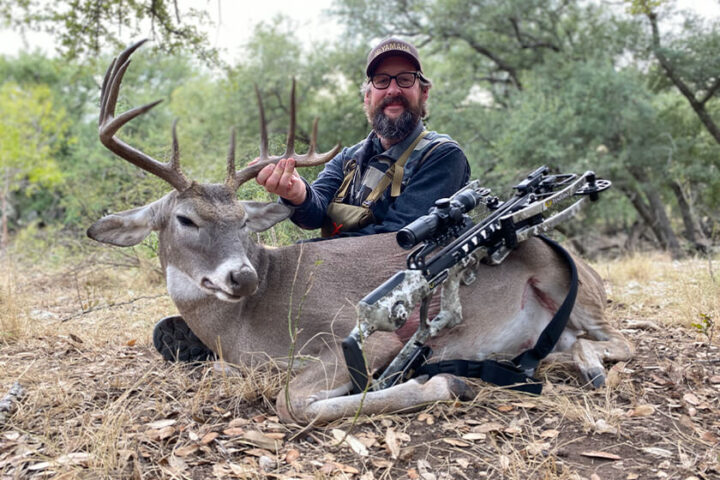
A lot of hunters nowadays prefer shooting with crossbows rather than hunting rifles. This is because of the massive stopping power that a crossbow offers in a single shot.
One arrow from a crossbow is usually enough to take down big game animals like elk.
Unlike guns, they’re silent too, which helps to not scare other game away if you’re looking to get multiple hits.
Frequently Asked Questions
After learning more about crossbows for hunting, you might have more questions about them. I’ve answered the most common questions below.
How easy is it to use a crossbow?
Crossbows are easy to use compared to recurve or compound bows because they’re easier to pull back, load, aim, and “fire.” Many crossbows have cranks to help in that department.
What are the advantages of crossbows?
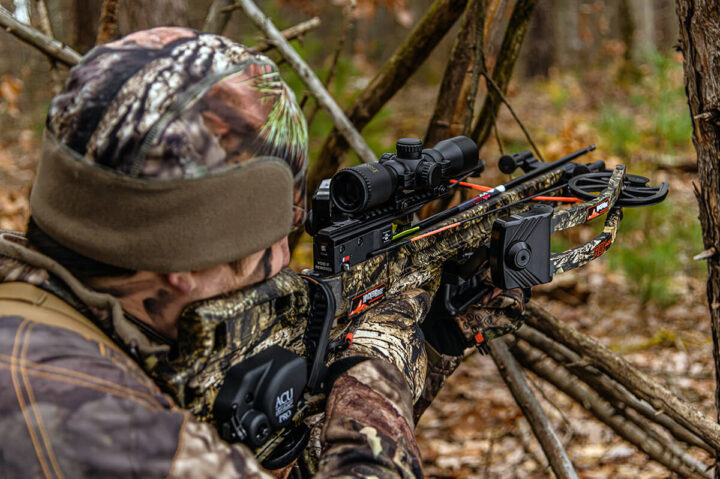
Crossbows don’t require the same training, posture, technique, and physical strength that regular bows do. It removes the element of fatigue from bow shooting while increasing the benefits.
What Is the Effective Killing Range of a Crossbow?
Most hunters can comfortably reach an effective killing range of around 40 yards. Past this distance, other factors like arrow drop and wind speed affect the shot.
Final Thoughts
If you’re looking to pick up a crossbow for hunting, just remember the things you should consider: draw weight, arrow speed, accuracy, and size/weight are the key factors to finding the right crossbow for your needs.
Good luck finding the perfect crossbow for you, and good hunting!
Hey there, I’m Vesna, leading our dynamic development team with a passion for driving digital innovation. As the head of our team, I thrive on tackling the challenges of the ever-evolving world of SEO. From optimizing algorithms to crafting user-friendly experiences, I’m dedicated to staying ahead of the curve and delivering top-notch results. While SEO is my bread and butter, I also find joy in exploring new technologies and finding innovative solutions to complex problems. As a leader in both SEO and development, I bring a unique blend of expertise and enthusiasm to every project.